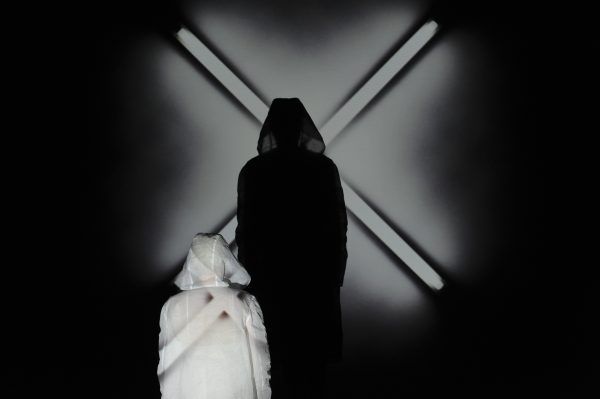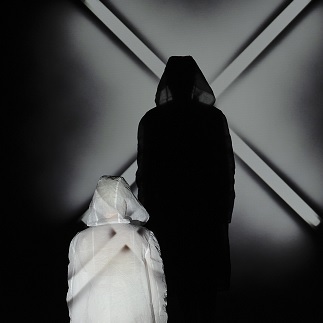Home | Blog | The Art of Making Dances
The Art of Making Dances
 I have been scouring Doris Humphrey’s book about choreographic craft titled The Art Of Making Dances. Within it there is a passage, written as a virtual commandment not to choose the big intangibles as subject matter, as one is doomed to failure if one so chooses. “The Creation of the World, the Music of the Spheres, War, The Labours of Hercules, the Industrial Revolution, and grandiose ideas of this sort are, in my opinion, out of bounds.” (Humphrey 1959:36)
I have been scouring Doris Humphrey’s book about choreographic craft titled The Art Of Making Dances. Within it there is a passage, written as a virtual commandment not to choose the big intangibles as subject matter, as one is doomed to failure if one so chooses. “The Creation of the World, the Music of the Spheres, War, The Labours of Hercules, the Industrial Revolution, and grandiose ideas of this sort are, in my opinion, out of bounds.” (Humphrey 1959:36)
Well nobody gave the artists I saw this past month that memo.
Instead, I’ve had the pleasure of attending dance works by artists challenging the very existence of the art form by pitting it comparatively against the ways of the universe and the philosophical order of things.
I am referring to the large scale international production of Olivier Dubois’ Tragédie, presented at Carriageworks, Tess de Quincey’s latest offering Metadata, presented at Parramatta Riverside Theatres, and Omer and Sharon Backley-Astrachan’s Tohu, performed as part of this year’s Sydney Fringe Festival.
What has been of primary interest to me is the diversity in which they have tackled these bigger-than-Ben Hur endeavours. For different reasons they have seemed easily accessible and in some cases the matter of accessibility has initially appeared at odds with the intent being delivered. The works were in no way less engaging for this fact.
When referring to ease of accessibility concerning Tragédie and Metadata, I was alluding to the deceptive physicalities employed. Tragédie began with a progressively augmented series of parallel strident walks, toward and away from the audience. Down stage, upstage, down stage, upstage, performed by one, then two and progressively many dancers. Tess de Quincey’s work was presented in two parts. In the first she performed a solo in a white, translucent, layered mesh-like fabric. Her work too, seemed deceptively pedestrian, the movement a minimalist, predominately gestural component of an incredibly complex light show, utilising a huge projection surface that engulfed three walls of the theatre.
In both works time and speed were of the essence. In Tragédie, we were exposed to stage time stretched to its limits, as a repetitive drumbeat score decreased in almost imperceptible intervals, until it felt momentarily unbearable. Our patience for change was tested to its limits as the opening gambit (those walks) was performed until we were left to wonder whether that’s all there was before the introduction of the first dramatic shift, which consisted of the inclusion of gestural language accompanied by deviations in the strict geometric relationship to space.
Of course this was the purpose, it was inspired by philosopher Nietzsche’s The Birth of Tragedy. I must confess that I had to peruse this theory via Google and am still not entirely clear on the specifics but here goes – I understand this concept to exist in man’s struggle between rational order and chaos, between ideal and earthly action, referencing the Greek Gods Apollo and Dionysus as the quintessential symbols epitomizing this dichotomy.
The scale of the work was impressive. Somehow the initial provision of less vocabulary, in conjunction with repetition and prompting by the program notes, provided space for me to contemplate Dubois’ vision.
In Metadata de Quincey and Fraser appeared very human against the digital backdrop. They seem relatively minuscule in life, although more imposing in shadow relief. While the digital imagery and the dance both unfolded methodically, subtly shifting from one dynamic to another, it was the expression on de Quincey’s face, her very humanity, which induced me to think of free radicals and then to free associate. Contemplating the impetus for the big bang and suspecting that life is created through the slightly deviant mischief I thought I spied in de Quincey’s facial malleability and in the commitment to physical delivery by both Fraser and de Quincey.
It was with regret that I didn’t stay for the science talk afterward and on first seeing Metadata I thought it cheating that possibly the work needed to be clarified by spoken Cliffs Notes. Then I remembered seeing French choreographer Xavier le Roy’s work Product of Circumstances, which was an amalgamation of autobiography, dance and lecture on breast cancer, at the Seymour Centre almost a decade earlier and I regretted that the post show talk wasn’t perhaps presented in compulsory intermittent intervals throughout.
This is not the first time I have seen Backely-Astrachan’s Tohu (meaning chaos). I recall seeing an earlier incarnation at Readymade in Ultimo. I distinctly remember the marbles (a well-utilised prop) because I had seen an interview on one of the network news programs the night before. A scientist was demonstrating the fabric of the universe in terms of the ripple effect that a stone’s throw causes to a small pool of water. At the gallery space in Annandale I lamented the fact that the marbles didn’t quite catch the light as they did rolling across the tarkett in Ultimo. Also in the art gallery I was bombarded with art, other people’s art. My eye kept returning to a paper sculpture which dominated the entrance and I thought it would be good to work with. I later discovered that this was a new addition to Tohu and that it (the paper sculpture) represented a river current of origami boats.
The boats and marbles achieved what de Quincey’s digital component and Dubois’ numerous bodies had, they prompted me to think of the bigger picture, of the impact of the universe in relation to the act of intimacy of the individual.
Doris Humphrey’s declaration was a bold one, now that I think about it. I don’t think even she took her own advice. Of course I am referring to the impression or impact upon seeing a video of Water Study, choreographed in 1928, which encapsulated the almost omnipotent power of the tides. What is the point of a hard and fast rule if it is not meant to be broken?


 I have been scouring Doris Humphrey’s book about choreographic craft titled The Art Of Making Dances. Within it there is a passage, written as a virtual commandment not to choose the big intangibles as subject matter, as one is doomed to failure if one so chooses. “The Creation of the World, the Music of the Spheres, War, The Labours of Hercules, the Industrial Revolution, and grandiose ideas of this sort are, in my opinion, out of bounds.” (Humphrey 1959:36)
I have been scouring Doris Humphrey’s book about choreographic craft titled The Art Of Making Dances. Within it there is a passage, written as a virtual commandment not to choose the big intangibles as subject matter, as one is doomed to failure if one so chooses. “The Creation of the World, the Music of the Spheres, War, The Labours of Hercules, the Industrial Revolution, and grandiose ideas of this sort are, in my opinion, out of bounds.” (Humphrey 1959:36)